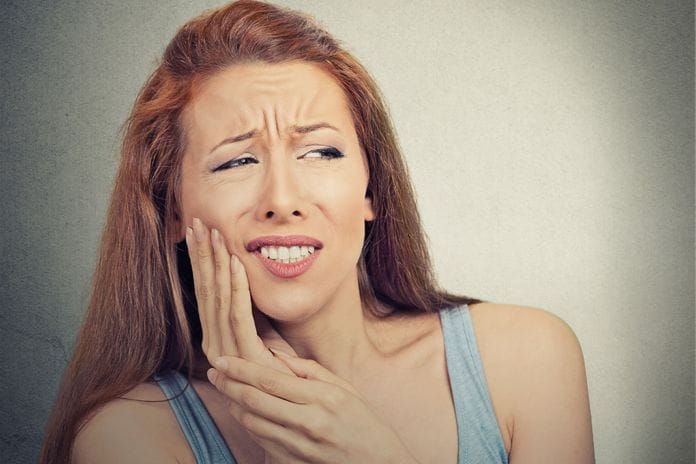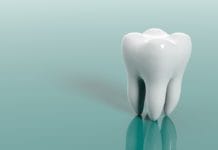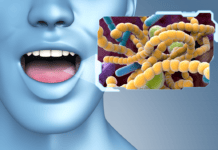Periodontal disease causes chronic inflammation, tissue destruction, and cannot be cured only maintained. Periodontal disease has some genetic qualities, and if left untreated can wreak havoc on other organs. It has been associated with heart disease, stroke, and some cancers. All the traits I used to describe periodontal disease could be used to describe several other diseases, all of which are autoimmune diseases, such as rheumatoid arthritis, lupus, Sjogren’s, and diabetes, just to name a few. Is it possible that periodontal disease is an autoimmune disease or has an autoimmune component?
Brandtzaeg and Kraus first theorized an autoimmune basis for the pathogenesis of periodontal disease in 1965. Since then, a multitude of studies has focused on detecting autoantibodies directed toward various self-antigens.1 Autoimmunity can be defined as the breakdown of the mechanism responsible for self-tolerance and induction of an immune response against components of the self.2 According to the American Academy of Periodontology, periodontal disease is explained as follows, “Toxins produced by the bacteria in plaque irritate the gums. The toxins stimulate a chronic inflammatory response in which the body, in essence, turns on itself, and the tissues and bone that support the teeth are broken down and destroyed.”3 As you can see, these descriptions are very similar, and from a clinical point of view, the course of exacerbation and remissions, genetic vulnerability, and environmental factors hint at parallels between periodontal disease and autoimmune diseases.4
The role of autoimmunity in chronic inflammation is still not clear. Researchers don’t exactly know the cause of autoimmune diseases. It is possible that autoimmunity is a feature of all chronic inflammation.2 There have been significant advances in our understanding of human autoimmunity that have led to improvements in classification and diagnosis and, most importantly, research advances in new therapies.
The importance of autoimmunity and the mechanisms that lead to clinical disease were first recognized about 50 years ago following the pioneering studies of Sir Frank Macfarlane Burnet and his Nobel Prize-winning hypothesis of the “forbidden clone.”5 To date, with so many advances made in the field of Periodontics, the etiopathogenesis of this infectious disease is still an enigma, the autoimmune component of the disease seems to be somewhat underplayed, or ignored altogether.2
Viral and bacterial infections may play a role as an exogenous factor triggering an autoimmune response. In experimental models of autoimmunity, disease can be transferred by activated, but not resting, autoreactive T cells; indicating that activation of autoreactive T cells is required for the development of autoimmune diseases. The infectious agents act as a stimulating factor in such responses. Thus the existence of such a microorganism in periodontal pockets may not only stimulate the production of antibody to this microbe but also stimulate autoantibody production to serum components or degenerated host periodontal tissues.2
Although inflammatory responses are primarily initiated to prevent or suspend tissue damage caused by invading pathogens, an exaggerated inflammation in response to infection can also cause tissue damage in genetically susceptible individuals.6 Periodontal lesions contain large amounts of leukocytes, among which, B cells seem to be a predominant cell type. These cells and their products, which are associated with tissue destruction, are controlled by immunoregulatory mechanisms. The equilibrium or imbalance established between the biofilm and the inflammatory process determines the severity of the periodontal lesion. These cells are abundant in subjects with autoimmune diseases, such as Sjögren’s syndrome and rheumatoid arthritis.
A 2009 pilot study determined autoimmune reactions are involved in periodontal disease, where one of the main evaluated autoantigens is collagen type 1. In addition to antibodies autoreactive to collagen type 1, several other autoreactive antibodies have associations with periodontal disease. Some of these include antidesmosomal (antibody associated with pemphigus), antineutrophil cytoplasmic (antibody associated with systemic vasculitis), antiphospholipid (antibody associated with blood clots and pregnancy complications such as miscarriage and stillbirth), and anti-HSP60 antibodies (antibody associated with the presence and severity of coronary artery disease). The study confirmed that autoimmunity is involved in the disease progression of periodontal disease.1
Another study went a step further and compared chronic periodontitis and aggressive periodontitis regarding autoimmune activity, and determined the autoreactivities observed in aggressive periodontitis are more severe and diverse than those observed in chronic periodontitis. This study suggested that autoimmune reactivity could play a role in the tissue destruction of periodontal disease. Studies in these patients indicate that B cells and plasma cells, together with osteoclastogenic factors and specific cytokines involved in their growth and differentiation, participate in the induction of the pathological bone loss in periodontitis. This novel insight suggests that selective targeting of B cells could represent a future therapeutic avenue for severe periodontal disease.7
It has been 53 years since the concept of autoimmunity was considered as a factor in periodontal disease. In light of the results of many studies that have concluded that there is an autoimmune component to periodontal disease, we may see a shift in the process of diagnosing, educating, and treating periodontal disease. Closely assessing medical history to determine host susceptibility and better patient education concerning the immune response to certain bacteria that could lead to chronic inflammation is necessary. Patients should be informed about the connection between chronic inflammation and autoimmune diseases. Incorporating diagnostic salivary testing, laser therapy, and possibly targeted B cell therapy, along with other non-surgical periodontal therapies already widely used such as SRP, we will have more tools to control periodontal disease. What an exciting time to be a dental professional!
SEE ALSO: What Patients Need to Know About Periodontitis and Heart Disease
DON’T MISS: Ground-Breaking Perio Vaccine May Begin Trials in 2018
References
- Koutouzis, T., Haber, D., Shaddox, L., Aukhil, I., Wallet, S. Autoreactivity of Serum Immunoglobulin to Periodontal Tissue Components: A Pilot Study. J Periodontol. 2009 April; 80(4): 625-633. Retrieved from https://www.ncbi.nlm.nih.gov/pmc/articles/PMC3594842/.
- Nair, S., Faizuddin, M., Dharmapalan, J. Role of Autoimmune Response in Periodontal Disease. Autoimmune Dis. 2014; 2014: 596824 retrieved from https://www.ncbi.nlm.nih.gov/pmc/articles/PMC4055614/.
- American Academy of Periodontology. Retrieved from https://www.perio.org/consumer/types-gum-disease.html.
- Sterin-Borda, L., Furlan, C., Borda, E. Circulating Beta 1 Adrenergic Autoantibodies from Patients with Chronic Periodontitis Interact with Gingival Fibroblasts. J Dent 2009;3:191-199. Retrieved from https://www.ncbi.nlm.nih.gov/pubmed/19756193.
- Wang, L., Wang, F.S., Gershwin, M.E. Human Autoimmune Diseases: A Comprehensive Update. J Intern Med Oct;278(4):369-95. Retrieved from https://www.ncbi.nlm.nih.gov/pubmed/26212387.
- Danzer, C., Mattner, J. Impact of Microbes on Autoimmune Disease. Aech Immunol Ther Exp (Warsz). 2013 June;61(3):175-186. Retrieved from https://www.ncbi.nlm.nih.gov/pmc/articles/PMC4134873/.
- Zouali, M. The Emerging Roles of B-cells as Partners and Targets in Periodontitis. Autoimmunity. 2017 Feb;50(1):61-70. Retrieved from https://www.ncbi.nlm.nih.gov/pubmed/28013554.
- Center for Disease Control and Prevention. Retrieved from https://www.cdc.gov/oralhealth/periodontal_disease/index.htm.











